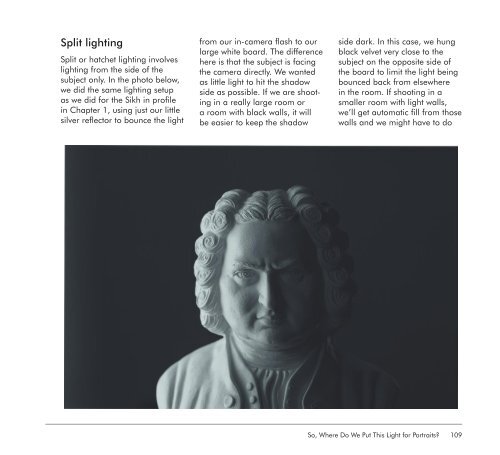Focus On Lighting Photos Focus on the Fundamentals.pdf
You also want an ePaper? Increase the reach of your titles
YUMPU automatically turns print PDFs into web optimized ePapers that Google loves.
Split lighting<br />
Split or hatchet lighting involves<br />
lighting from <strong>the</strong> side of <strong>the</strong><br />
subject <strong>on</strong>ly. In <strong>the</strong> photo below,<br />
we did <strong>the</strong> same lighting setup<br />
as we did for <strong>the</strong> Sikh in profile<br />
in Chapter 1, using just our little<br />
silver reflector to bounce <strong>the</strong> light<br />
from our in-camera flash to our<br />
large white board. The difference<br />
here is that <strong>the</strong> subject is facing<br />
<strong>the</strong> camera directly. We wanted<br />
as little light to hit <strong>the</strong> shadow<br />
side as possible. If we are shooting<br />
in a really large room or<br />
a room with black walls, it will<br />
be easier to keep <strong>the</strong> shadow<br />
side dark. In this case, we hung<br />
black velvet very close to <strong>the</strong><br />
subject <strong>on</strong> <strong>the</strong> opposite side of<br />
<strong>the</strong> board to limit <strong>the</strong> light being<br />
bounced back from elsewhere<br />
in <strong>the</strong> room. If shooting in a<br />
smaller room with light walls,<br />
we’ll get automatic fill from those<br />
walls and we might have to do<br />
So, Where Do We Put This Light for Portraits? 109



